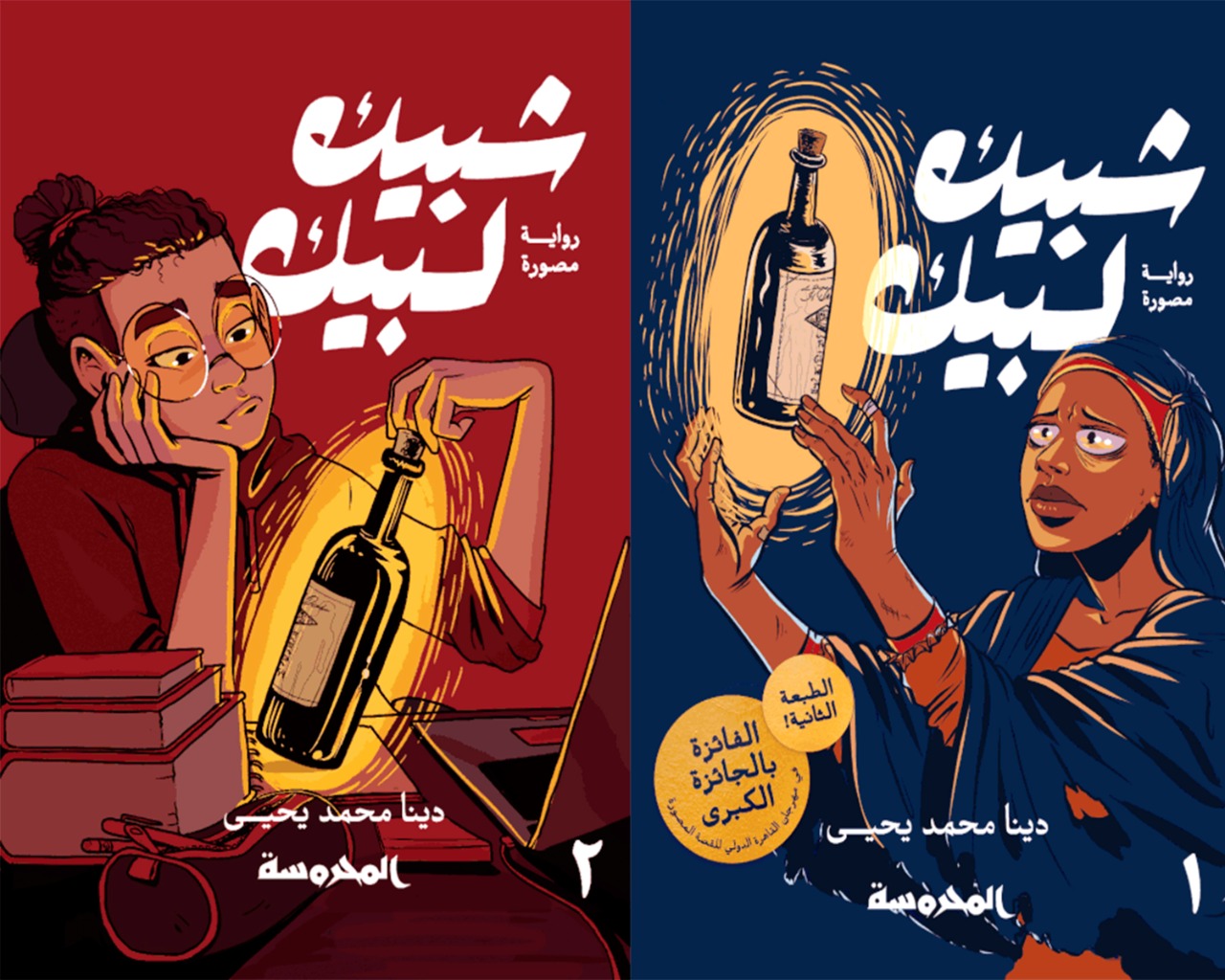Nour Tarabieh
@nourtarts
Photos: Courtesy of Deena Mohamed
When one thinks of fantasy comics, Egypt isn’t necessarily the first country that comes to mind, but thanks to the efforts of Egyptian Illustrator and Designer Deena Mohamed’16, Egyptian comics have made it to the international stage.
Published in 2017 by the Egyptian publishing company Dar el Mahrousa, the English translation of her graphic novel Shubeik Lubeik (I’m at Your Service) has recently been picked up by Pantheon Books in the United States and Granta in the United Kingdom.
The graphic novel and its sequel tell the story of an alternate Egypt, where wishes can be bought and sold. The higher the wish’s quality, the higher the price, which lends to interesting world-building and social commentary.
Mohamed began making comics at 18 years old, creating her famous webcomic Qahera, about a Muslim Egyptian superhero who addresses issues such as Islamophobia and misogyny. At the time, she’d been studying Graphic Design at AUC, and had gone on to write her senior thesis on the history of comics in Egypt.
In the years since, she has worked for numerous clients such as Viacom (a leading American mass media conglomerate), Google, UN Women, Harassmap and Mada Masr.
“I’ve been an artist since I was three, and a reader since I was four. I think when your passions are art and reading, creating stories becomes a natural consequence. I loved drawing my own characters in their own little world, so I think, looking back, there’s little surprise that I am making comics now,” Mohamed stated.
Her idea of wishes that can be bought and sold came from observing kiosks in Cairo, and seeing how colorful they are in contrast to the buildings or deserts around them. From there, she imagined kiosks as places where magical items could be purchased, which led her to the idea of wishes.
“I wanted to write it with Egyptians as the target audience, make a proper graphic novel, have it printed as a book, and submit it to CairoComix […] I feel very lucky that Shubeik Lubeik has been doing well enough to sustain itself and complete the trilogy,” Mohamed explained.
Shubeik Lubeik went on to win Best Graphic Novel and Grand Prize of the CairoComix Festival in 2017. It was also a part of the exhibition on Contemporary Arab Comics at the Museum of Comics in Angouleme, France.
Mohamed herself spent three months in 2018 as an artist-in-residence at the Maison des Auteurs, an artist residency program in Angouleme, France, which aims to support cartoonists, artists and multimedia artists. After completing her work there, she returned to her main residence and workplace in Cairo.
She has expressed that the comics she read were mostly foreign or foreign-inspired due to the difficulty of acquiring comics in Egypt. She listed Mickey, Tintin, and the W.I.T.C.H comics as things she had read growing up.
Currently, she is inspired by Toktok, the Egyptian comics anthology, and especially the design style of Shennawy, who is a comics artist on it. She is also inspired by Japanese manga, such as Fullmetal Alchemist, and various webcomics, along with the recent Spiderman: Into the Spiderverse animated film.
As for future aspirations, Mohamed would like to do something in animation, or writing something where she does not have to draw. She is looking forward to the English translation of Shubeik Lubeik, which will be a massive book that collects all three volumes of the trilogy into one.
Funnily enough, Mohamed didn’t really expect this to become her career.
“Making comics in Egypt is usually a hobby. It was only when I sold the English translation rights for Shubeik Lubeik to PenguinRandomHouse that I realized, oh, I’m making a living out of this now,” she said. “So I’m a full-time comics artist. That’s cool,” she said.
Mahmoud Shaltout, assistant professor at the Core Curriculum department and author of the graphic novel Nazly and Lobna: Corona Bel Bechamel, says Shubeik Lubeik marks the entrance of authentic, contemporary Egyptian comics into the international market.
He believes that entering the international sphere presents specific challenges, such as presenting Egyptian comics to foreign audiences in an appropriate and relevant context. Correct translation, in particular, is a definite challenge.
“One observation is that most comic artists who have garnered an international audience did so through fellowships or residencies in countries that support comic art -for example, France,” Shaltout added.
Mohamed’s work stands out for its relatability and authenticity, according to Architecture student and comics fan Monica Magdy.
“[Mohamed] creates characters which are not very conventional, design-wise, and which challenge the social norms in Egyptian society. […] Deena’s work creates a voice for young people of our generation, and touches upon issues that are not commonly addressed,” Magdy asded.

